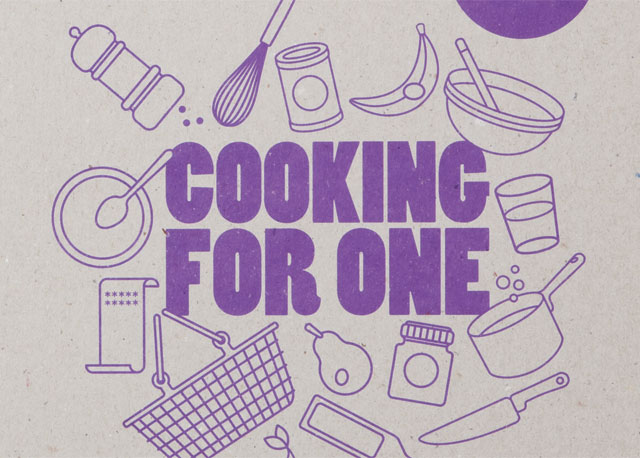Cooking for One: Part Four: Helpful Gizmos and Gadgets

Kitchen Scale
This is a must-have for any bariatric surgery patient. If you do not have one, go get one. A kitchen scale is even more important when you are cooking for one. Your kitchen scale can be especially helpful for measuring out smaller portions of larger recipes or of store-bought, prepackaged food.
If you know the nutritional information of the entire recipe and know what portion you want for a single serving, start by weighing the entire recipe. Then remove it from the scale and weigh out the portion you need. For example, if your recipe weighs 1,000 grams and has 2,000 calories, and you know you need 200 calories, you know you need 1/10 of the recipe. So, you can measure out 100 grams (1/10 of the recipe) on your scale.
Containers with Lids
Having enough containers can make all the difference. It’s easy to get motivated to make multi-serving healthy recipes when you know where you’re going to store what you do not eat immediately. Divide your weekend recipes into portions of 2 to 3 servings and store each portion in a container in the freezer. Then you can defrost what you need for a meal, plus have another serving or two to eat the next day.
Have ample sets of small containers on hand so you can take your food with you. You can take salads in the larger containers. The bulk of your containers can be medium-sized and just right for cut fruit, raw veggies, deli slices, cooked chicken, and leftovers. Use tiny containers for condiments like peanut butter, hummus and light salad dressing. Make sure the lids are tight-fitting so you can take your food with you without spilling.
Additional Help for Carrying Food
You may need to transport your food frequently and weight loss surgery. You’ll probably be taking your own lunch to work instead of going out to eat, and you should always have enough healthy snacks on hand to prevent yourself from grabbing junk food out of desperation.
An insulated lunch bag is one convenience. It is also helpful to have foil, plastic wrap, and sandwich baggies on hand so you can always pack up what you need at the last minute. They are not as environmentally friendly as reusable containers, but they can save your diet.
A Vacuum Sealer
You’ve probably seen television infomercials talking about the benefits of vacuum sealers. Sellers promise all sorts of benefits, and many weight loss surgery patients find that these are more than empty promises.
- Save money by buying in bulk or in family packs, or by purchasing extra amounts of fresh foods while they are on sale, and storing them until you use them.
- Prevent waste. Vacuum sealers claim to keep food fresher for several times longer in the freezer than using a container or plastic bag to store food. They also prevent freezer burn.
- Eat healthier. You know that if something healthy is available, you’ll eat it. If not, you won’t. Sealing your food up in vacuum packages helps you make sure a healthy foundation for a meal is always available.
You can vacuum seal almost anything, from fish, meats, and poultry to fruits and vegetables to cheese and baked goods, like muffins and pancakes. You can reheat your food in the microwave or simmering water. Make sure you have always have plastic bags on hand to seal your food.
Pots and Pans
If time is one of your biggest limitations, a slow cooker can help you out. You can make all kinds of chili, stews, casseroles, and other main courses that are high-protein and rich in vegetables. Because you can often use bouillon or broth to keep the dish moist, slow cooking can also be low-fat. When you get home to the hot meal, serve yourself what you want to eat and freeze the rest.
A muffin tin may become a surprising new essential. A six-muffin tin can fit into most toaster ovens, making them nice and convenient, while a 12-muffin tin can get you more muffins and let you make bigger recipes. Another likely necessity is a frying pan for making omelets and scrambled eggs. You can buy a small one to make portion control easier.
Blender
This is especially critical when you are in the pureed foods stage after weight loss surgery. A blender can come in handy at other times, too, especially if you depend on shakes to meet your protein requirements or get in a quick meal with fresh fruits and vegetables.
Choose a blender that is easy to use and clean. If you have a huge food blender that you dread using because it involves lifting the heavy thing down from a shelf and endless washing up afterwards, you might want to invest in another blender. A hand blender is one option. You can also look at shake-making blenders like a Nutri-Bullet.
You’re on Your Way!
Don’t let your efforts to go waste as you read up on cooking for your weight loss surgery diet and discover new tips and recipes. Gather resources to help you. Collect your favorite links from the BariatricPal forums and from blogs and other helpful weight loss surgery sites so you can easily go back to them when you want to. Bookmark or print when you run across new recipes, and take careful notes when you make one you like.
Don’t forget to read the earlier parts of this series on cooking for one. Also, check out the BariatricPal conversation on cooking for one! Get a few tried-and-true tips, and share your own discoveries. There are some pretty great ideas floating around!



Melanie36 71
Posted
Great article! I am using my Electric Steamer, and I'm also thinking of getting a T-Fal Optigrill.
Share this comment
Link to comment
Share on other sites